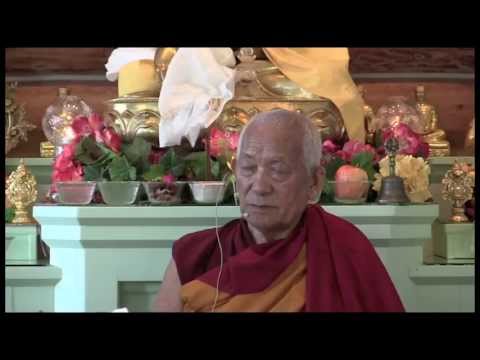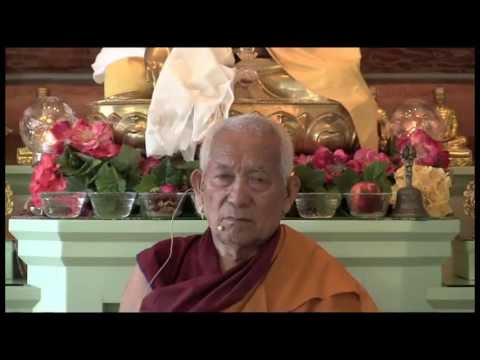Chapter 1: Verses 9-16
Part of a series of teachings on Aryadeva's 400 Stanzas on the Middle Way given on an annual basis by Geshe Yeshe Thabkhe from 2013-2017.
Questions and answers
- What is the best way of reflecting on death? What makes it seem real and likely?
- How does one develop realization of gross and subtle impermanence?
- How seeing that which is impure as pure is also referred to as seeing that which is empty as not empty of pure self?
- How can we practice mindfulness of death in every moment when we are so busy with our life?
- How can work with the dying people affect our mind and practice?
On coarse and subtle impermanence
- Unsuitability of doing unethical action to save one’s life
- Since life is constantly in a state of change, we shouldn’t get attached to it but meditate on subtle impermanence
- If we would like to live long we should also accept getting old
- Why focusing attention only on grief for others’ deaths while not thinking about own impermanence is inappropriate
- Why is grief not helpful?
- How equanimity is more reasonable attitude than extreme attachment to our loved ones
Geshe Yeshe Thabkhe
Geshe Yeshe Thabkhe was born in 1930 in Lhokha, Central Tibet and became a monk at the age of 13. After completing his studies at Drepung Loseling Monastery in 1969, he was awarded Geshe Lharampa, the highest degree in the Geluk School of Tibetan Buddhism. He is an emeritus professor at the Central Institute of Higher Tibetan Studies and an eminent scholar of both Madhyamaka and Indian Buddhist studies. His works include Hindi translations of The Essence of Good Explanation of Definitive and Interpretable Meanings by Lama Tsongkhapa and Kamalasila's commentary on the Rice Seedling Sutra. His own commentary, The Rice Seedling Sutra: Buddha’s Teachings on Dependent Arising, was translated into English by Joshua and Diana Cutler and published by Wisdom Publications. Geshela has facilitated many research works, such as a complete translation of Tsongkhapa’s The Great Treatise on the Stages of the Path to Enlightenment, a major project undertaken by the Tibetan Buddhist Learning Center in New Jersey where he teaches regularly.


